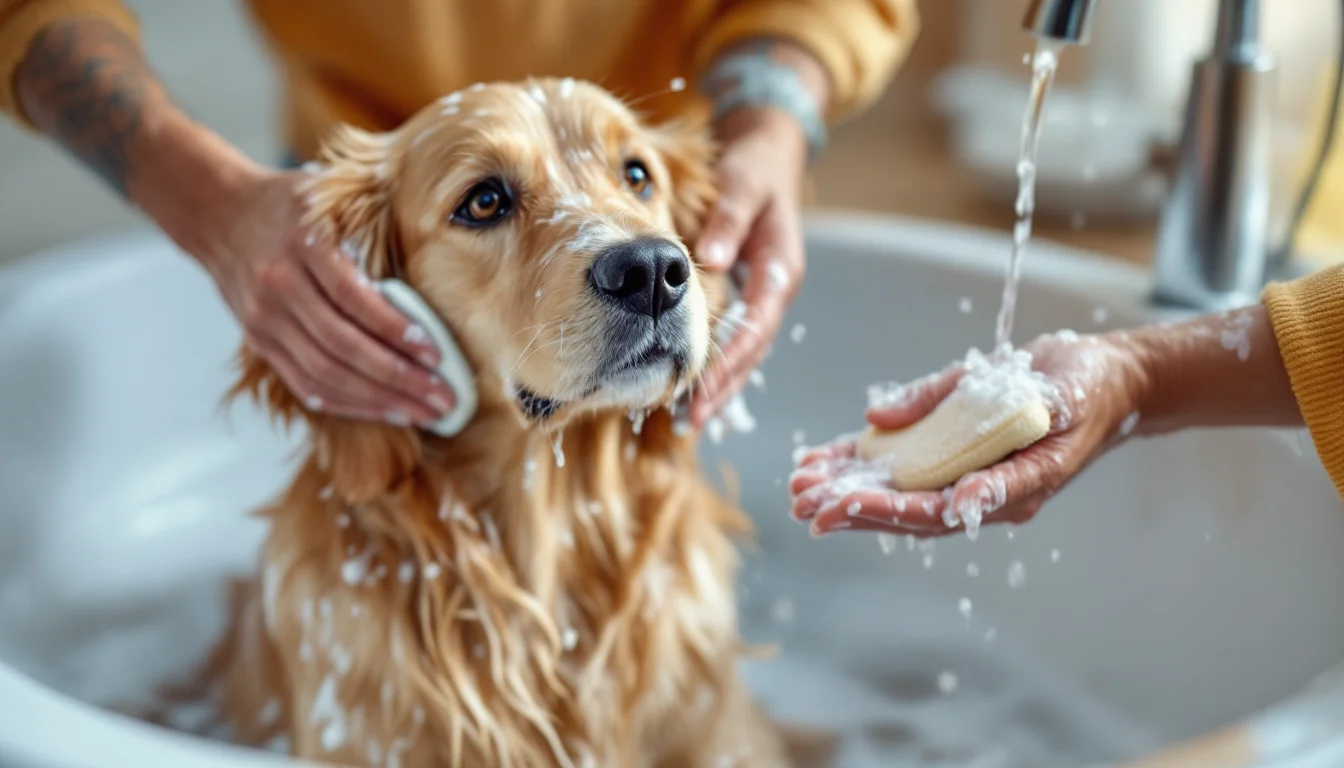A dog’s coat isn’t just about looks—it’s a reflection of their overall health. Shiny fur and smooth, itch-free skin are signs that your dog is thriving. On the other hand, dryness, flaking, or excessive shedding can point to deeper health issues or poor care routines.
In this guide, you’ll find practical, everyday tips to maintain the health of your dog’s skin and coat, whether they’re short-haired, long-haired, or somewhere in between.
Why Skin and Coat Care Is Important
The skin is the largest organ in your dog’s body, and the coat provides vital protection against weather, parasites, and environmental damage. Together, they act as the first line of defense—and keeping them healthy can prevent discomfort, infections, and even serious medical problems.
Healthy skin and fur also help regulate body temperature and support your dog’s immune system.
1. Provide a Nutrient-Rich Diet
What your dog eats shows up in their fur. A poor diet can result in dull coats, shedding, and even skin rashes.
Key nutrients for healthy skin and coat:
- Omega-3 and Omega-6 fatty acids: These promote a glossy coat and reduce inflammation.
- Zinc: Helps with cell repair and reduces skin flakiness.
- Biotin (Vitamin B7): Supports skin health and hair growth.
- Vitamin E: Acts as an antioxidant to protect skin cells.
Talk to your vet about high-quality dog foods that are specially formulated for skin and coat health. You can also ask if supplements like fish oil capsules are right for your dog.
2. Maintain a Consistent Grooming Routine
Regular grooming not only keeps your dog looking good, but it also helps remove dirt, dead hair, and allergens that can irritate the skin.
Grooming tips:
- Brush your dog regularly: Daily for long-haired breeds, weekly for short-haired ones.
- Use the right brush: A slicker brush for long-haired dogs, and a bristle brush for short coats.
- Check for mats and tangles: These can pull at the skin and cause discomfort or infections.
Grooming is also the perfect time to check for fleas, ticks, cuts, lumps, or irritated areas that might need attention.
3. Bathe the Right Way
Bathing your dog too often—or with the wrong products—can actually dry out their skin and strip away natural oils.
Bathing tips:
- Use a gentle, dog-specific shampoo: Human shampoos (even baby shampoo) can upset your dog’s skin pH.
- Don’t overdo it: Most dogs only need a bath every 4–6 weeks, unless they get into something dirty.
- Rinse thoroughly: Leftover shampoo can cause itching or allergic reactions.
If your dog has sensitive skin, consider oatmeal-based or hypoallergenic shampoos.
4. Watch for Allergies and Irritations
Environmental allergens, food sensitivities, or even flea bites can cause your dog to itch excessively or develop red, flaky patches.
Signs of allergies include:
- Constant scratching or licking
- Hot spots (inflamed, raw skin)
- Hair loss
- Ear infections
- Red, watery eyes
If you suspect an allergy, consult your vet. They may recommend a special diet, antihistamines, or allergy testing.
5. Keep Your Dog Hydrated
Dehydration can quickly affect your dog’s skin, making it dry, flaky, or even cracked.
Ways to keep your dog hydrated:
- Always have clean water available: Refresh it daily.
- Offer ice cubes in hot weather: Some dogs love them!
- Incorporate wet food occasionally: Canned food has higher moisture content.
6. Protect from Parasites
Fleas, ticks, and mites are major causes of skin problems. Even a few bites can lead to intense itching or infections.
Prevention strategies:
- Use flea and tick preventatives regularly.
- Check your dog’s fur after walks, especially in wooded or grassy areas.
- Wash their bedding often.
- Clean your home regularly to remove eggs or larvae.
7. Avoid Harsh Weather Conditions
Just like humans, dogs can suffer skin damage from extreme weather.
In winter:
- Cold air and heaters can dry out the skin.
- Use dog-safe moisturizers (avoid human lotions).
- Keep walks short during freezing conditions.
In summer:
- Avoid walking on hot pavement—it can burn paw pads.
- Never shave double-coated breeds, as their fur protects them from heat too.
- Provide shade and cool water at all times.
8. Pay Attention to Your Dog’s Behavior
Sometimes, skin and coat problems start silently. Changes in your dog’s behavior can give you early clues.
Watch for:
- Excessive licking or biting at certain spots
- Loss of interest in grooming (especially in older dogs)
- Restlessness or irritability caused by itchiness
- Smelly skin or greasy fur (could indicate infection)
When in doubt, consult your vet. Early diagnosis can prevent larger issues later.
9. Choose the Right Bedding and Environment
Your dog’s surroundings matter. Clean, breathable spaces contribute to healthy skin and prevent issues caused by dust, bacteria, or mold.
- Wash their bedding weekly with pet-safe detergent.
- Vacuum regularly to remove pet dander and hair.
- Make sure your dog has a cool and clean place to sleep.
10. Schedule Regular Vet Check-Ups
Many underlying health conditions show their first signs through the skin. Your vet can catch things you might miss—like thyroid problems, fungal infections, or autoimmune disorders.
Annual exams (or more frequent for older dogs) ensure your pet stays in top condition.
A Healthy Coat Is a Happy Dog
When you care for your dog’s skin and coat, you’re not just helping them look better—you’re actively supporting their comfort, mood, and well-being. With a good diet, regular grooming, and a healthy lifestyle, your dog will shine from the inside out.
Your dog may not thank you with words, but that soft, healthy fur and those tail wags will say it all.

Dedicated to sharing practical tips and accessible guidance on dog care, nutrition, safety, and daily routines for owners of different breeds. With a focus on promoting a safe, healthy, and happy environment for pets, the blog’s content covers breed-specific needs, home adjustments, energy levels, and wellness strategies for all kinds of dogs.
